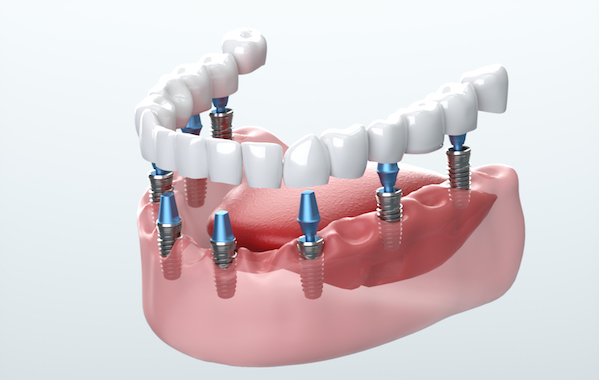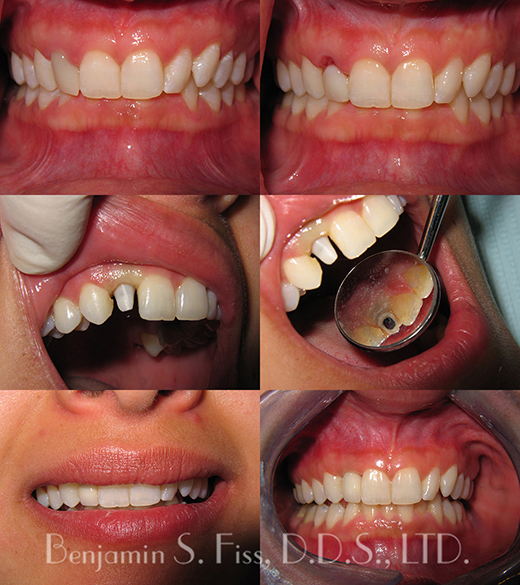Dental Implants Whole Mouth Jenison MI - Dental Implants: Surgery, Purpose & Benefits
Dental Implants Whole Mouth Jenison MI - Dental Implants: Surgery, Purpose & Benefits
Blog Article
Dental Implants Walker MI - Multiple Tooth Dental Implants
The journey toward dental implants begins with a radical assessment of the jawbone's condition. When there is insufficient bone density to help an implant, bone grafting turns into an important procedure to recreate a steady basis. Understanding how much additional resources bone grafting is needed for dental implants tremendously influences the remedy plan, visit this site timeline, and overall success rate.
The quantity of bone grafting required is dependent upon multiple factors, including the extent of bone loss, the implant's size, and the precise location inside the mouth. In circumstances of great bone loss due to periodontal diseases, trauma, or prolonged tooth loss, more intensive grafting may be necessary. Conversely, if the bone loss is minimal, a smaller graft could suffice.
Implants Dental Procedure Grand Rapids MI - Dental Implants - Conditions & Treatments
The evaluation process typically includes imaging research similar to X-rays or 3D scans, allowing the dental professional to visualise the bone structure (Dental Implants Whole Mouth Grand Haven MI). These photographs help in determining the quality and amount of present bone. If the bone is deemed inadequate, the dentist will then define the appropriate grafting procedures
Grafting may be sourced from various areas. Autografts, which contain harvesting bone from the affected person's personal physique, are often deemed the gold standard. These provide excellent integration with the prevailing bone but include the drawback of additional surgery. Other choices include allografts, which use donor bone, and artificial materials designed to imitate natural bone. Each possibility has its own implications on healing and success rates.
After determining the required amount of bone grafting, the dental professional will create a tailored plan for the affected person. This plan could include the timing of bone grafting in relation to the implant placement. In some cases, a graft may be performed simultaneously with the implant surgery. Alternatively, in more complicated scenarios, a separate healing period is indicated.
Healing timelines differ based mostly on the individual's health, the extent of grafting, and the kind of graft used. Generally, the healing of a bone graft takes a number of months earlier than an implant could be placed. During this time, bone regeneration happens, resulting in a secure base for the implant.
Dental Implants Near Me Wyoming MI - What are dental Implants? Types, procedures, and more
Patients usually wonder about the risks associated with bone grafting. While complications similar to infection or graft failure are potential, these events are relatively rare. Adhering to post-operative care instructions and attending follow-up appointments minimize risks and promote therapeutic.
Once the bone has adequately healed, the dentist assesses the graft's success by evaluating the bone density and stability. If every little thing seems favorable, the subsequent steps toward inserting the dental implant can start. The success of this subsequent step largely hinges on the quality of the bone graft and its integration with the encircling bone.
Cost concerns play an necessary role in the decision-making course of. The expense of bone grafting varies based mostly on materials used, the complexity of the case, and geographic location. It is crucial for sufferers to debate funds upfront to keep away from surprising payments later in the therapy.
Implant Dental Grand Haven MI - Dental Implants services
Also, patients ought to have realistic expectations concerning the timeline and outcomes. Many components can influence how much bone grafting is needed and its general effectiveness. A collaborative strategy involving the patient and the dental group not solely ensures readability but also enhances the probabilities of a profitable consequence.

Maintaining good oral hygiene and regular dental visits following the procedure is significant. These practices can prevent complications and make certain that each the graft and the implant remain secure over time. The ongoing relationship with a dental professional is essential, particularly in the months following the procedures.
In conclusion, understanding how a lot bone grafting is needed for dental implants encompasses a multi-faceted strategy that considers bone quality, grafting sorts, healing time, and total patient health. The steadiness between achieving the specified aesthetic and functional outcomes whereas minimizing risks and issues is at the heart of dental implant procedures. The journey may be intensive, but a well-planned strategy maximizes the probabilities for a profitable, long-lasting result in restorative dental work.
- Determining the quantity of bone grafting required for dental implants usually hinges on the initial bone density and volume of the affected person's jawbone.
- Each affected person's case is unique; elements corresponding to earlier extractions, periodontal disease, or trauma can affect the necessity for grafting.
- A 3D imaging scan is typically carried out to evaluate the exact dimensions of the available bone and inform the grafting strategy.
- The sort of dental implant placement—immediate or delayed—may dictate the quantity of bone grafting essential for stability and integration.
- Different types of graft materials, similar to autografts, allografts, or artificial choices, can impact how much grafting material is needed.
- Assessing the patient's general health, age, and lifestyle habits can have an effect on the healing course of, influencing graft quantity necessities.
- The depth and placement of the implant can necessitate varying amounts of graft material to secure optimal outcomes.
- Successful integration of the dental implant typically relies on enough bone density, resulting in a tailor-made grafting approach for each individual.
- Consultation with an oral surgeon will provide a clearer estimate of the bone grafting needed based on comprehensive evaluations and imaging results.
- Post-grafting therapeutic time varies; thus, a cautious analysis is essential to determine the final amount of grafting required for successful implantation.undefinedHow much bone grafting is needed for dental implants?
Dental Implants Cost Wyoming MI - Dental Implants - Oral and Maxillofacial Surgery
What is bone grafting and why is it needed for dental implants?undefinedBone grafting is a surgical process that adds bone or bone-like materials to the jawbone. It is important for dental implants when the present bone is insufficient to assist the implant, making certain stability and long-term success.
How do I know if I want a bone graft for dental implants?undefinedYour dentist or oral surgeon will evaluate your jawbone via x-rays or 3D imaging to discover out its density and volume. If they discover that you lack adequate bone, they may suggest a bone graft earlier than proceeding with the dental implant.
Dental Implants Cost Holland MI - How Much Do Dental Implants Cost? (2024)
What elements affect the quantity of bone grafting needed?undefinedFactors embody the dimensions and placement of the implant web site, the health and density of current bone, and individual healing capacity (Cheap Dental Implants Grand Haven MI). These components assist the dentist decide the suitable amount of graft material needed
Are there different types of bone grafts used for dental implants?undefinedYes, there are a number of types, together with autografts (from your individual body), allografts (from a donor), xenografts (from animals), and artificial graft materials. Each type has distinctive advantages and may be chosen based mostly on individual affected person wants.
Dental Implant And Bridges Grand Haven MI - What Are Dental Implants?
How long does the bone grafting procedure take?undefinedThe period varies primarily based on the complexity of the grafting process and the extent of the world treated. Generally, a bone grafting procedure can take wherever from 30 minutes to some hours, relying on the specific circumstances.
What is the recovery time after a bone graft for implants?undefinedRecovery occasions can differ, however usually, preliminary therapeutic might take a number of weeks, while complete integration of the graft with the bone can take several months. Your dentist will provide a customized timeline based mostly in your state of affairs.

Will I expertise pain after the bone grafting procedure?undefinedSome discomfort is frequent after a bone graft, nevertheless it's generally manageable with prescribed pain medication. Most patients report that pain diminishes significantly within a few days.
Dental Implants Whole Mouth Grandville MI - Guide to Dental Implants: A Popular Option for Tooth Replacement
How does bone grafting affect the general dental implant timeline?undefinedBone grafting could prolong the overall timeline for receiving dental implants, as it requires a healing interval earlier than implants could be placed. This can add a number of months to the process however is important for a successful implant placement.

Are there risks related to bone grafting for dental implants?undefinedLike any surgical procedure, bone grafting carries some risks, similar to infection, graft failure, or complications related to anesthesia. However, when carried out by an skilled skilled, these risks are usually low.
Can I have dental implants placed instantly after a bone graft?undefinedIn many circumstances, dental implants can't be placed immediately after a bone graft as a result of want for the graft to combine into the prevailing bone. However, some techniques, like immediate loading, could permit for this beneath specific conditions. Your supplier will advise you on the best choice based in your circumstances.
Report this page